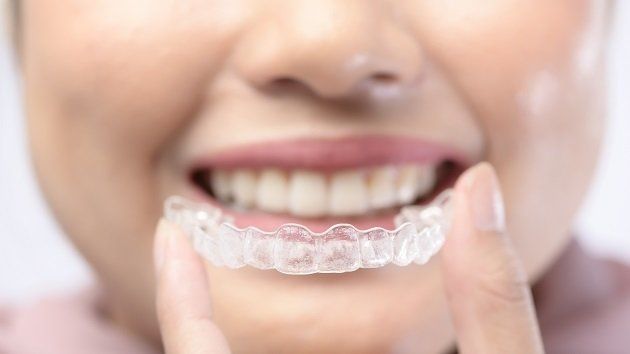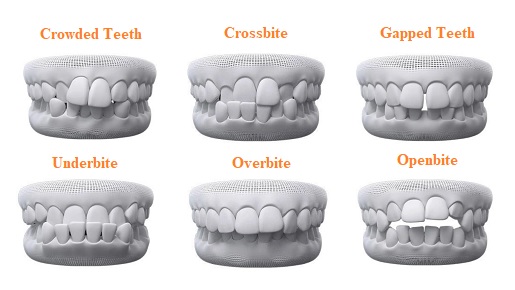Success Stories: How Invisalign Changed Lives and Enhanced Confidence
Wiki Article
Invisalign vs. Traditional Braces: Which Choice Is Right for You?
When taking into consideration orthodontic therapy, the option between Invisalign and traditional dental braces offers a number of essential elements that merit mindful analysis. Invisalign uses a discreet alternative with detachable aligners, while standard braces provide an extra noticeable yet effective solution for extreme misalignment.Introduction of Treatment Choices

In comparison, conventional dental braces include metal braces and wires that are bound to the teeth. This approach uses continuous stress over time to achieve placement. While reliable for complex orthodontic problems, typical braces need routine visits for modifications and can present obstacles in maintaining oral health as a result of the trouble of cleaning around brackets and cables.
Both options have their benefits, and the option usually pivots on specific dental conditions, lifestyle preferences, and client conformity. Ultimately, consulting an orthodontic professional is crucial for identifying one of the most appropriate treatment strategy customized to private needs. Comprehending the subtleties of each alternative can significantly influence the overall success of orthodontic therapy.
Visual Factors To Consider
A significant factor influencing the selection in between Invisalign and typical dental braces is the visual charm each treatment provides. Invisalign aligners are crafted from clear plastic, making them practically unnoticeable when worn. This discreet look is specifically attracting grownups and teenagers that may feel self-conscious concerning their orthodontic therapy. The capability to maintain a natural smile throughout the placement procedure can considerably enhance the patient's self-confidence in expert and social settings.In comparison, standard braces are composed of metal braces and cables, which can be more recognizable. While developments in orthodontic technology have actually led to the growth of smaller braces and colored elastics, standard braces still preserve a more noticeable account. For some individuals, the presence of braces might discourage them from looking for necessary therapy.
Inevitably, the option in between Invisalign and conventional dental braces might hinge on individual preferences concerning visual appeals. Individuals who prioritize discernment often favor Invisalign, while those that are less concerned about visibility may select typical braces. Understanding the aesthetic implications of each option is essential for making an educated decision that lines up with one's way of living and choices.
Comfort and Convenience

In terms of convenience, Invisalign aligners are detachable, allowing individuals to enjoy their visit here favorite foods without constraint and preserve optimal oral health. Brushing and flossing are simplified, as the aligners can be obtained throughout these routines, whereas typical dental braces need careful steering around cords and brackets.
Additionally, Invisalign's dynamic system enables for fewer orthodontic brows through. Individuals typically obtain several sets of aligners simultaneously, which can improve the treatment procedure and reduce time invested in the orthodontist's chair. On the other hand, typical braces demand routine changes, making them less hassle-free for those with hectic schedules. Invisalign. Generally, the comfort and comfort of Invisalign make it an appealing option for many individuals looking for orthodontic treatment.
Therapy Duration and Efficiency
While both Invisalign and conventional dental braces are effective in remedying oral misalignments, the duration of therapy can differ considerably in between the 2 options. Normally, Invisalign therapy can take anywhere from 12 to 18 months, depending on the complexity of the situation. The clear aligners function by progressively shifting teeth into their preferred settings, and normal follow-ups with an orthodontist aid ensure development stays on course.
In comparison, traditional braces frequently need a longer commitment, typically varying from 18 months to 3 years. This is due to their fixed nature and the usage of cords and braces, which can be extra reliable for extreme imbalances and complex cases (Invisalign). The therapy performance of typical dental braces is well-documented, as they enable specific changes and better control over tooth motion
Eventually, the option between Invisalign and conventional braces may depend upon both the awaited therapy period and the certain dental issues handy. Consulting with an orthodontist is crucial, as they can provide customized referrals based on individual needs, ensuring the picked technique lines up with desired timeframes and outcomes.
Price Comparison and Insurance Options
Price plays a considerable role in the decision-making procedure for individuals considering orthodontic therapy, whether going with Invisalign or traditional dental braces. Typically, the cost of Invisalign arrays from $3,000 to $8,000, while conventional dental braces normally cost in between $2,000 and $6,000. Aspects influencing these prices include the intricacy of the case, the period of treatment, and geographical area.Insurance policy coverage can significantly affect out-of-pocket expenses. Many oral insurance plans give partial coverage for orthodontic treatments, yet the specifics can vary widely. It is critical for people to examine their insurance plan to identify the degree of protection for either alternative. Typically, typical braces may be extra frequently covered by insurance plans contrasted to Invisalign, which some insurance firms categorize as an aesthetic treatment.
In addition, several orthodontic practices provide versatile settlement strategies, making both therapy alternatives more available. Individuals must ask about possible funding alternatives and price cuts for upfront payments. Evaluating the total cost, including insurance benefits and layaway plan, is essential for making an informed decision that straightens with both aesthetic preferences and budget plan considerations.

Conclusion
In summary, the choice in between Invisalign and typical dental braces rests on additional reading numerous variables, consisting of visual preferences, comfort, treatment period, and price. Invisalign supplies a very discreet, detachable choice that helps with oral hygiene and nutritional versatility, while traditional dental braces might be a lot more appropriate for complex oral concerns and usually come with a lower price factor. Eventually, assessment with an orthodontist is vital to evaluate individual conditions and figure out the most appropriate therapy choice for achieving optimum dental alignment.When taking into consideration orthodontic therapy, the choice in between Invisalign and standard braces offers several important aspects that warrant cautious assessment.Contrasting Invisalign and conventional dental braces reveals distinctive treatment More hints choices for orthodontic improvement.While both Invisalign and conventional dental braces are reliable in dealing with oral misalignments, the period of treatment can vary significantly in between the two options.Cost plays a substantial role in the decision-making procedure for individuals thinking about orthodontic therapy, whether deciding for Invisalign or standard braces.In recap, the option in between Invisalign and traditional braces pivots on numerous variables, including visual choices, comfort, treatment period, and expense.
Report this wiki page